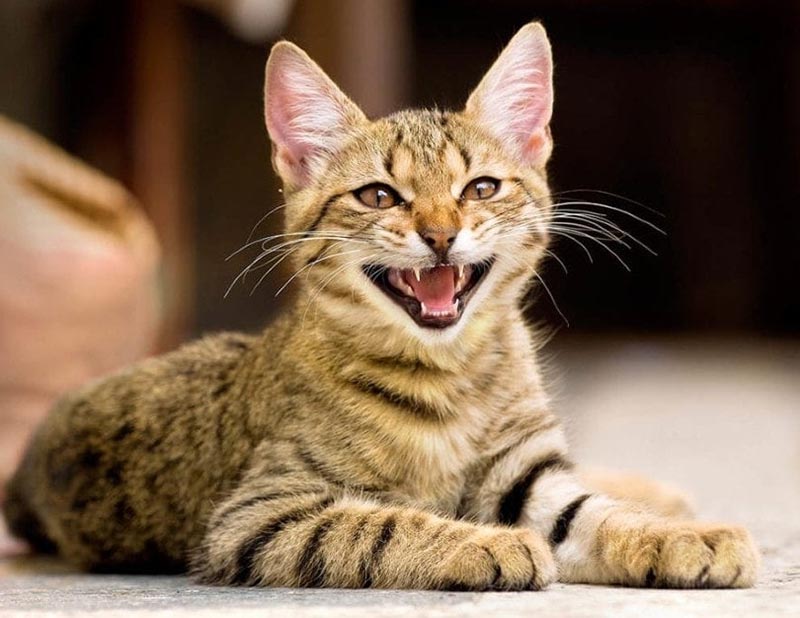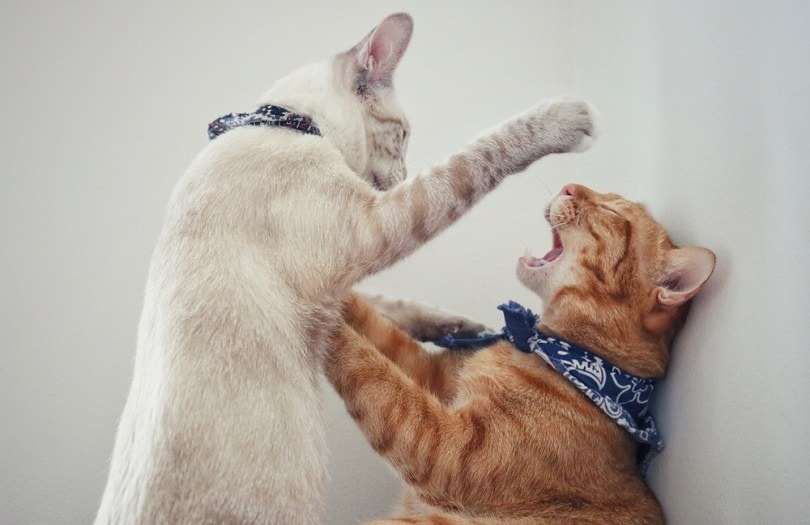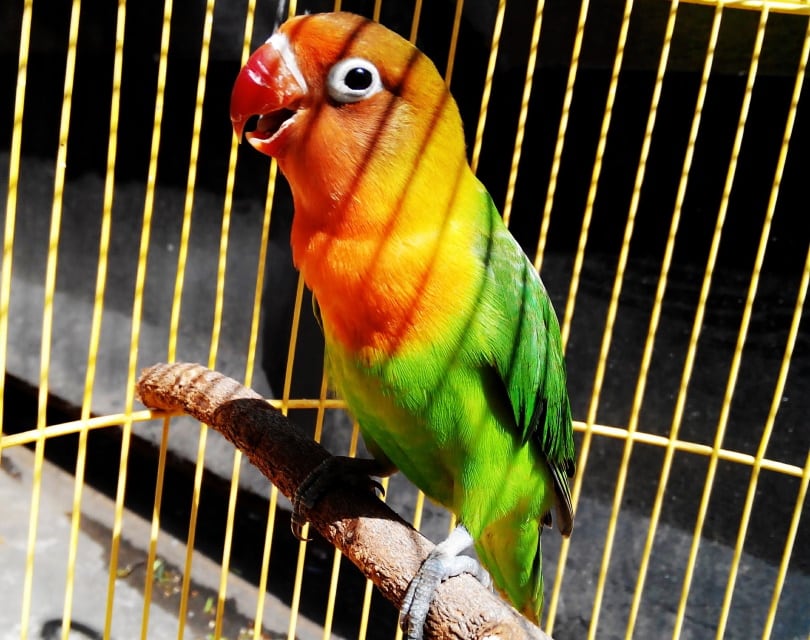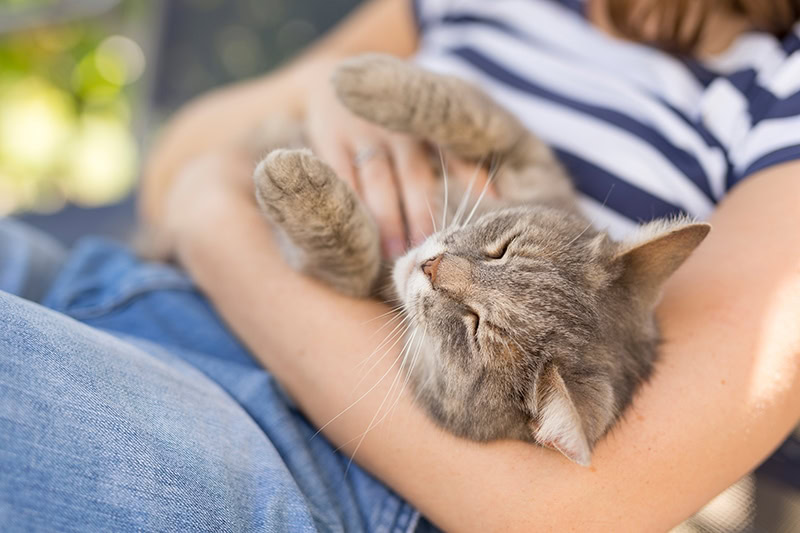Do cats laugh? That is a question that some people may have asked over the years. Many cat owners believe that their furry feline companions are capable of recognizing human laughter, although they cannot produce it themselves, while others remain skeptical and unsure.
Cats can’t laugh. However, they may sometimes make certain facial expressions or get caught in the middle of a yawn or a meow, which if photographed, may appear similar to a laugh, if looked at from an entirely anthropomorphic standpoint. In this article, we will look at ways cats communicate with us, which, unfortunately, has nothing to do with laughter.

Can Cats Really Laugh?
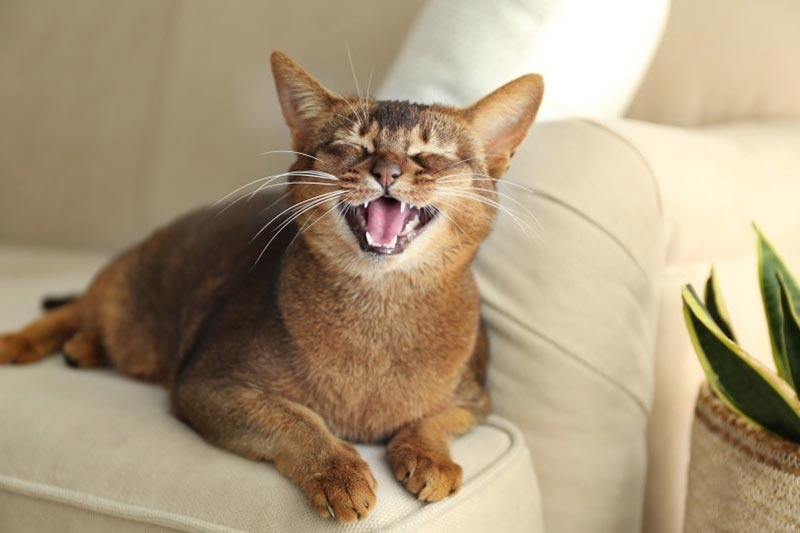
Nope, they can’t. When observing cats in their natural environment, it is easy to see that they are capable of vocalizing and displaying facial expressions. However, these vocalizations and expressions do not really equate to human laughter.
Some cat owners report seeing their cats display behaviors or make sounds that may somewhat resemble a smile or laughter, such as purring, meowing, or making chirping sounds in response to something that they find interesting. Additionally, cats may sometimes display facial expressions that may look like a smile with raised eyebrows when playing or enjoying a cuddle, which are similar to the responses seen when humans smile. Still, most of these are just human interpretations and anthropomorphizing our feline companions.
However, it’s important to note that sometimes, if cats have breathing difficulties or injuries that cause them to breathe with an open mouth or keep their mouth very slightly open, they may at first seem as if they are smiling. In reality, they are experiencing a serious health issue and need to see the vet as soon as possible.
What Does Laughing Generally Involve?
In order to understand why cats can’t laugh, it is important to understand what laughing typically involves. Laughter is an expression of joy or amusement, present in humans and all species of apes, and often involves a few different components:
- Vocalization: This usually takes the form of a “ha” sound but can also include other vocalizations.
- Facial Expression: Laughing often involves a wide smile and bright eyes, which may be accompanied by raised eyebrows or bared teeth.
- Body Language: Laughing typically involves an increase in energy and movement, with the body shaking or jerking slightly in response to something funny.
However, that doesn’t mean that other animal species don’t possess a sense of humor or can’t express joy, as we know they certainly can.
Other Ways Cats Express Happiness, Joy, and Amusement
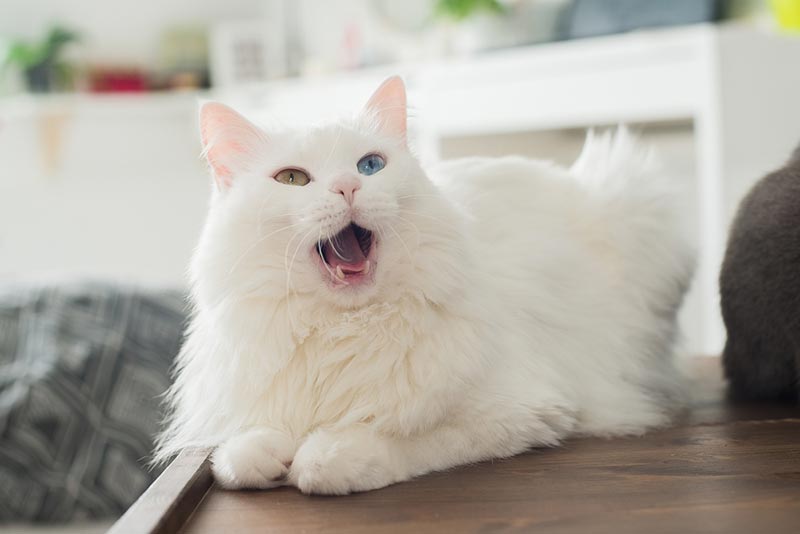
Though cats may not laugh in the same way humans do, they are still able to express happiness and joy through other behaviors. Cats often purr when content or feeling good. They may also twitch their tails or jump around in response to something that they find amusing.
Cat Happiness FAQs
Now that we’ve looked at what laughing involves, let’s further explore how cats can express happiness.
What does cat happiness sound like?
Cats make all sorts of sounds, including low-pitched purrs, chirping sounds, trilling, chattering, twittering, and other vocalizations, when seeking attention, watching prey, or playing.
What activities make cats happy?
Cats experience happiness and contentment in response to activities such as playing with toys, being petted, or simply observing something amusing such as prey.
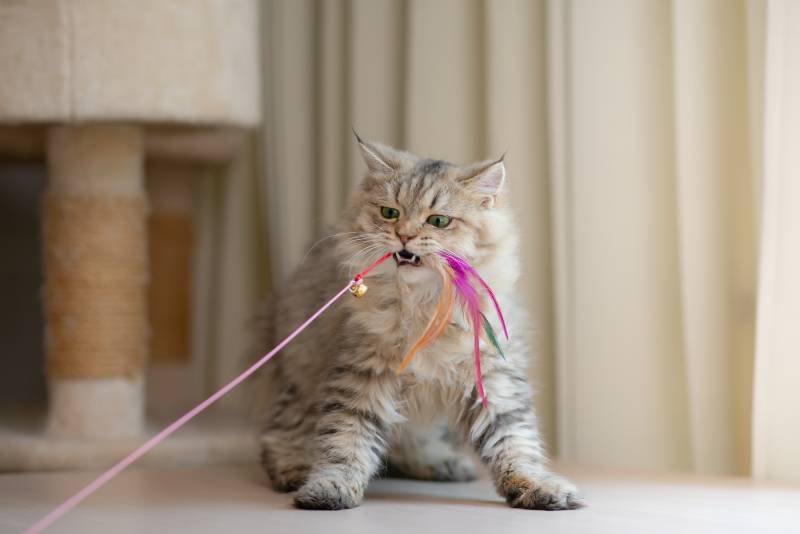
What other body language can I watch for?
In addition to vocalizations or facial expressions, cats may also display signs of joy through activities such as rubbing against people, purring, kneading, or rolling on their backs. Their tails and body language can also tell a lot about how they’re feeling. Cats will also show signs of joy when playing and interacting with other cats they like.
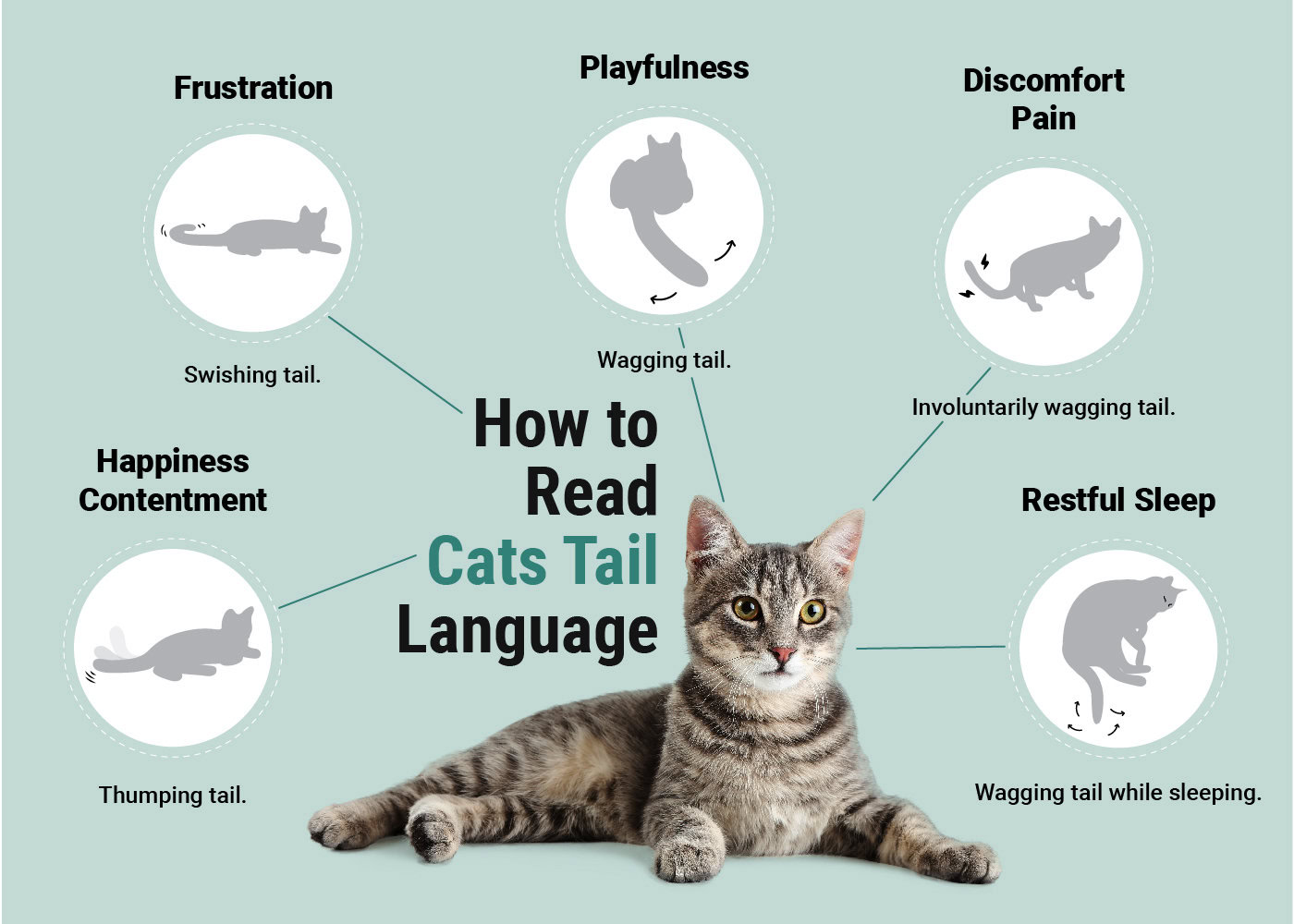
My cat makes a chattering sound. Is that laughing?
Chattering is a common sound made by cats and can indicate that they are feeling happy or excited, and it is often associated with observing prey. However, it is not really laughter.
How can I create a fun environment for my cat?
To create a fun environment for your cat, try providing them with plenty of toys, scratching posts, vertical perches and interactive games. Additionally, make sure to spend quality time playing with or petting your cat each day. This will help ensure that they have an enjoyable and stimulating home life.
What should I do if my cat seems unhappy?
If your cat appears to be feeling down or anxious, try providing them with a calm and comfortable environment. As cats are natural hunters, you may also want to consider offering them interactive toys and treats that simulate hunting behavior. Additionally, spending some quality bonding time with your cat can help them feel loved and appreciated. If these efforts do not seem to be helping, it may be time to consult a veterinarian to ensure they are not suffering from an underlying illness.
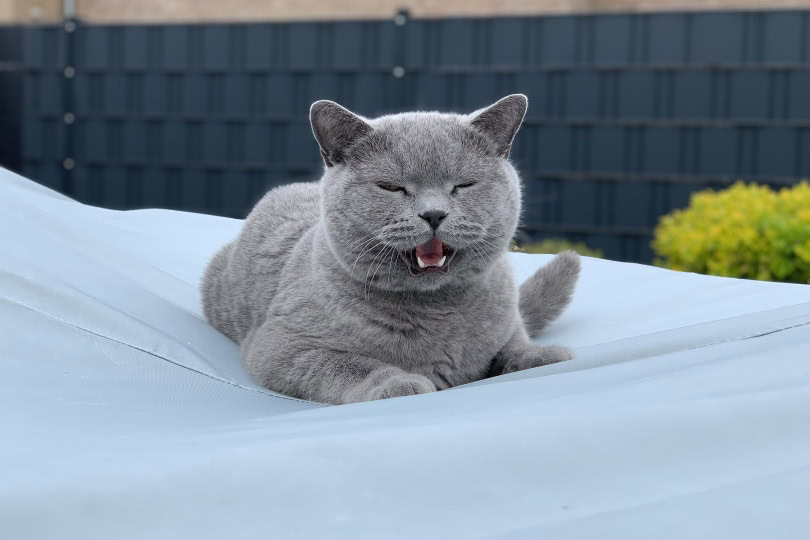
How can I tell if my cat is really enjoying an activity?
The best way to tell if your cat is truly enjoying something is to observe their body language. If they seem relaxed and content, then they are likely experiencing joy or amusement. Additionally, watch out for behaviors such as purring or chirping, which are usually indicative of a happy and playful mood. Lastly, if they are head-butting you, showing you their belly, holding their tail high with a little kink or a question mark at the tip, with neutral or forward-facing straight ears, they are content and trust you!
In addition to vocalizations and body language, cats may also display signs of joy or amusement through activities such as kneading their paws or twitching their tails. If you notice these types of behaviors while your cat is playing or interacting with something, they are likely feeling happy and content.
Why does my cat pant when they play?
Panting may occur in some kittens and young cats when they exert themselves excessively during playing or if they overheat. This can also occur in cats that are not used to such active exercise or are overweight. If your cat is panting only occasionally while playing very actively and otherwise appears healthy, then it is likely that they are overheating during exercise. However, if your cat is panting frequently, or doing it at rest and exhibiting other signs of distress, they will need to see the vet urgently. In these cases, excessive panting can signal an underlying medical condition that needs to be addressed promptly.
What does it mean when my cat kneads their paws?
Kneading is a common behavior in cats and can indicate that they are feeling content or relaxed. This is often seen while they are being petted or playing with toys, as it is a sign of pleasure. Additionally, kneading can also be an indication of your cat’s desire for affection, so it may be worth providing some extra cuddles and attention if you notice this behavior. All in all, kneading is usually a good sign as it suggests that your cat is feeling happy and relaxed!
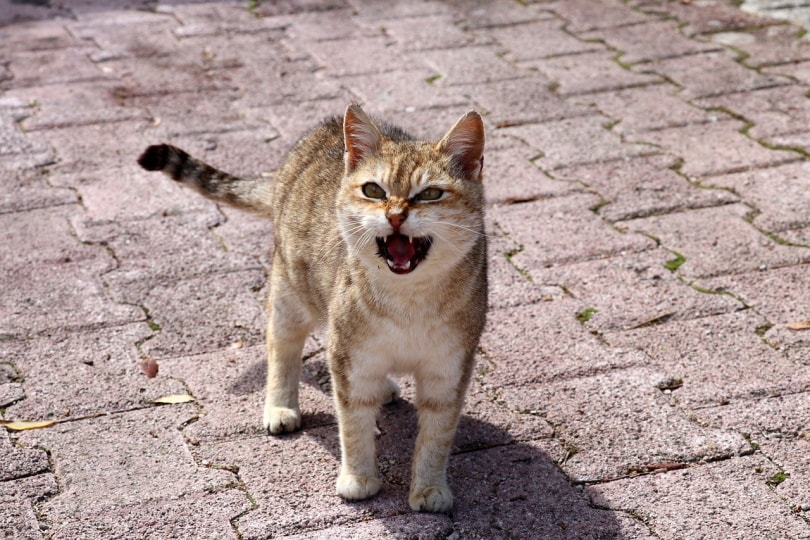
- You might also like: Can Cats Laugh? Do They Laugh Like Humans? (FAQs)

Conclusion
While cats may not be able to produce the same sounds or expressions that humans make when they laugh, they do seem to have the capacity for facial expressions and body language that indicate amusement, contentment, or joy. The next time your cat does something funny, pay close attention – they might just be laughing in the only way they can!
Featured Image Credit: Stanimir G.Stoev, Shutterstock
Contents
- Can Cats Really Laugh?
- What Does Laughing Generally Involve?
- Other Ways Cats Express Happiness, Joy, and Amusement
- Cat Happiness FAQs
- What does cat happiness sound like?
- What activities make cats happy?
- What other body language can I watch for?
- My cat makes a chattering sound. Is that laughing?
- How can I create a fun environment for my cat?
- What should I do if my cat seems unhappy?
- How can I tell if my cat is really enjoying an activity?
- Why does my cat pant when they play?
- What does it mean when my cat kneads their paws?
- Conclusion
